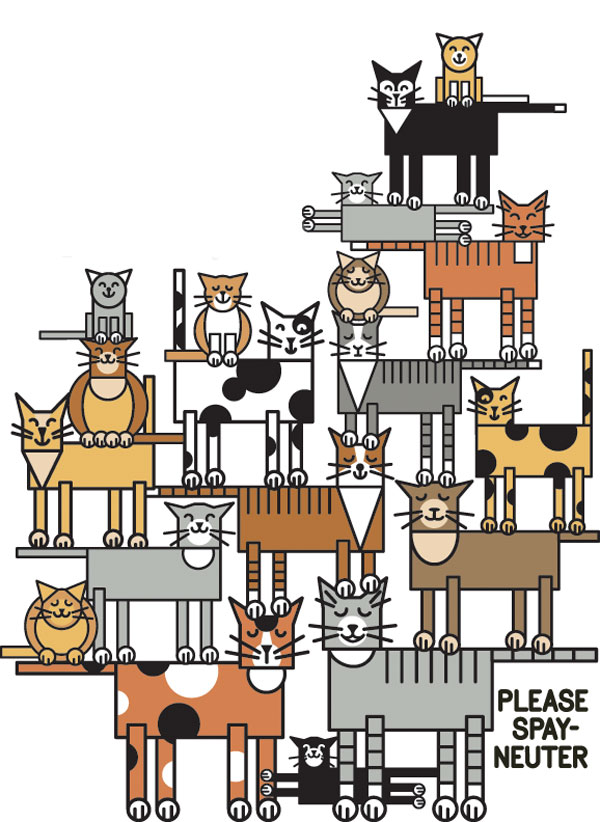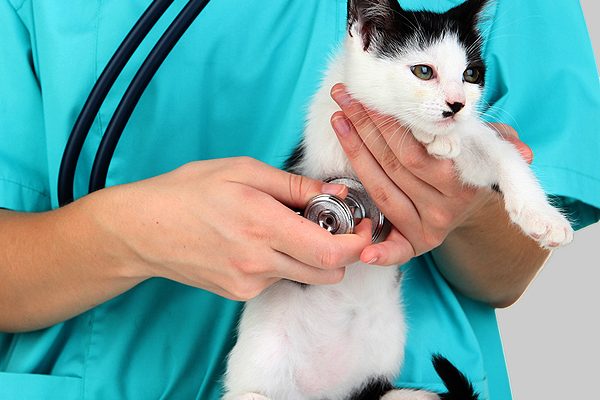Editor’s note: Have you seen the new Catster print magazine in stores? Or in the waiting area of your vet’s office? This article appeared in our March/April 2017 issue. Click here to subscribe to Catster and get the bimonthly magazine delivered to your home.
We know cats should be spayed or neutered. The big question is when. Current recommendations are all over the map and are often unspecific, resulting in cat owners putting off the procedure.
Esther Mechler, of Brunswick, Maine, is the founder and president of Marian’s Dream, a nonprofit that began 30 years ago with a focus on putting an end to pet overpopulation. “I thought what a difference it will make if we get veterinary consensus on when to spay or neuter cats.”
With Esther’s help, the Veterinary Task Force on Feline Sterilization was formed early last year. one of the founding members, Joan Miller, San Diego-based chair of outreach and education with the Cat Fanciers’ Association, believes “that if we could, as a group, manage to create a specific recommendation on when to spay and neuter cats, lives will be saved.”
According to the ASPCA, about 1.4 million cats are euthanized annually in U.S. shelters. Dr. Julie Levy, professor in Maddie’s Shelter Medicine Program, University of Florida College of Veterinary Medicine, Gainesville, said, “We’re getting close to saving
all the healthy and treatable dogs, at least in more parts of the country than ever before, but we’re clearly not there with cats.”
Dr. Kendall Houlihan, assistant director of Animal Welfare Division of the American Veterinary Medical Association said, “Everyone recognized the benefits of spay/neuter before the first heat: both medical and behavioral benefits.”

The research
Research conducted by Dr. Kirk Breuninger, veterinary research associate for Banfield Pet Hospital in Vancouver, Washington, supports gonadectomy in domestic cats. Here are the major findings:
There’s evidence to determine that spaying before the first heat cycle has protective effects against mammary cancer occurring later in life. This is important because about 90 percent of mammary cancer is malignant.
There’s no evidence to suggest that pediatric gonadectomy up to 5 months of age is linked to any increased risk of disease.
There’s a general lack of well-designed studies in cats regarding all likely potential outcomes later in life of gonadectomy by 5 months. But we do know spaying or neutering before the first heat has many benefits. Obviously, there is no first litter, and there can be no pyometra (uterine infections), uterine, ovarian or testicular cancers or problem births.
Breuninger added, “Like with so many other areas, the review evidence is far more robust in dogs.”
That’s part of the problem. According to Dr. Glenn Olah, president of the Winn Feline Foundation, the nonprofit funder of cat health studies, many veterinarians defer to dog guidelines because cat studies haven’t been done and some vets still assume if an approach works for dogs it will work equally as well for cats.
Levy said while there are legitimate concerns about long-term health effects regarding spay and neuter in dogs, “there’s no evidence to indicate similar concerns in cats.”
The dilemma
So, here’s what’s happening: Without a definitive recommendation on when to spay or neuter, some cat owners just don’t follow through, and spaying or neutering doesn’t happen until after the first heat. “Most cat owners just don’t know that a female can get pregnant at 4 months, and certainly at 5 months, leading to unwanted litters,” Miller said. And depending on the practitioner’s recommendation, there’s a gap between the last vaccine and the suggestion to spay/neuter several months later. In that gap time, the cat winds up pregnant.
Intact male cats pose a different kind of problem. They might be more likely to spray, show intercat aggression and vocalize loudly at night. Indoor cats in heat may frantically claw their way outside to “hook up.” If they don’t get out, they can get anxious, which can lead to a wide assortment of behavior problems.
While there’s no robust study to support the notion that behavior of intact cats is an issue, task force members agreed it’s likely the case. And when behavior problems occur, the human-animal bond may fracture; subsequently those intact young cats may more likely be relinquished to shelters or put outdoors forever.

The solution
The accumulated evidence supports the notion to “Fix by Five Months.” Consistent messaging to and education of pet owners is key to curbing the problem of overpopulation. Houlihan pointed out that most shelters already provide spay and neuter prior to adoption. And Levy added that because vet students are being trained in shelters, they’re making the recommendation to fix by five.
The Veterinary Task Force on Feline Sterilization formally put forth its recommendation in a document, hoping to galvanize support among vets for consistent spaying and neutering of cats by five months of age.
Esther is pleased with the task force’s work. “Veterinarians and related professionals have led the way,” she said. “I’m confident the public will pay attention — cat lives will be saved.”
About the author: Steve Dale is a certified animal behavior consultant. He is a national newspaper columnist (Tribune Content Agency); heard on WGN Radio, Chicago; host of the nationally syndicated Steve Dale’s Pet World and author of the e-book Good Cat, among others. He’s a founder of the CATalyst Council, and serves on the boards of the Winn Feline Foundation and Tree House Humane Society, Chicago. Follow him on Facebook and Twitter.







